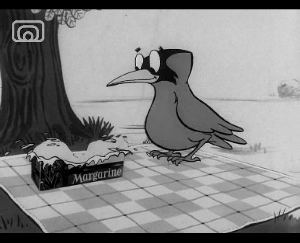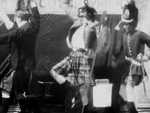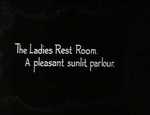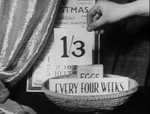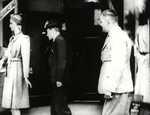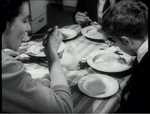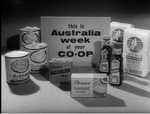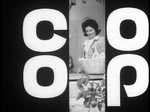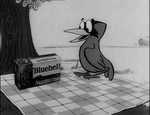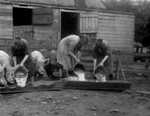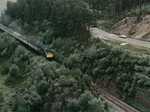Advertising Detectives
- Introduction
- Lesson
- Film Clips
- Print All
Introduction
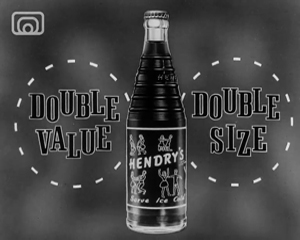
Scenario: Most countries in the world have a screen archive which holds film resources from that country. They give us a chance to see how people lived from the turn of the 19th/20th century to the present day. Often this film is on tape or film which is deteriorating and much of this is being converted to digital files so that they can be preserved permanently and allow the public to see them via the internet.
Often screen archivists are given film clips with no accompanying information and have to work out who made the film and why. Imagine you are a screen archivist and you have been given a USB stick with a number of digitised files on it. You have no information other than a label saying ‘Scottish ads’ on the side of the stick and the file name.
Lesson
What you have to do is:
Try to work out what year (or decade) each clip was created. You will need to use clues available in the film clip e.g. content (places, people, clothing, activities, technology, objects, words, lettering, music, objects); advertising strategy; technology e.g. colour/black and white, sound); style (e.g. camera movement, camera movement, editing).
Work out what, if anything, each clip tells you about the people of the time, how they lived and what their values were.
Compare each clip with similar advertising today.
To do this, like any detective, you will have to examine the film for clues and then follow up with further research by referring to books or doing internet research.
Notes for the Teacher
Studying Film for Clues:
Pupils will have to be reminded of the various types of clue provided by film:
Content clues: places, people, dress, activities, technology, objects, words, music, objects, etc.
Advertising clues: kind of ad and style.
Technology clues: black and white/colour, silent/sound, film quality, special effects.
Style clues: colour/black and white, realism, camera distance/movement/angle, editing, continuity editing, lettering/typography, etc.
Content clues:
Pupils will need to know a basic outline of the history of Scotland from the late 19th century to the present. An interactive timeline can be found on the National Library of Scotland website NLS timeline. They should know important dates such as the start and end of World Wars I and II and have an overall view of changes in prosperity and economic life in this period. Pupils should be able to refer to books or the internet to check on aspects of content such as fashion and design. They should know when UK currency was decimalised (1971).
Advertising clues:
There are a number of different types of advert which use moving images. For example there are very short films such as commercial ads promoting goods or services and which are usually 15s, 30s or 60s long. There are also longer ads shown in the cinema as well as longer infomercial programmes on some TV channels. There are also longer promotional films (from several minutes to around 30 min) which may be seen in the cinema or distributed on film, video, DVD or internet.
There are also public service ads – often produced by the Government - which give information for the public good e.g. anti-smoking ads.
The history of advertising has shown that advertisers have used different techniques over since the 1890s. A historical approach to advertising shows that there are at least 5 types of ad associated with various periods:
The dates are approximate and give an idea when a strategy emerged and became a dominant creative strategy. Each new strategy does not replace the others. Rather it adds to the range of strategies that advertisers can use.
Technical clues:
To study film technically pupils need to know the ideas behind continuity editing – i.e. how separate shots are edited together to produce the illusion of continuity. The first films of the late 19th century simply used a single shot but as film narrative developed a set of editing techniques developed to enable the audience understand the plot – by the 1910s this had evolved into what is now known as continuity editing. Pupils need to know the following:
terms for camera distances, camera angles, camera movements; types of edit; techniques of continuity editing (establishing shot, shot/reverse shot, match on action, eyeline match, common actions/sounds across shots). Continuity editing is comprehensively explained in Chapter 6 of D. Bordwell and K. Thompson
(2008) Film Art: an Introduction (8th edn.), New York, McGraw-Hill.
Technology clues:
Pupils should decide what dates they need to know and do the research themselves – they should appreciate the debates over who discovered various technologies first. They should also appreciate the time lag between the development of a technology and its general use. Some dates relevant to the advertising clips are given below:
Lesson guide prepared by Rick Instrell, teacher and freelance media educator.
